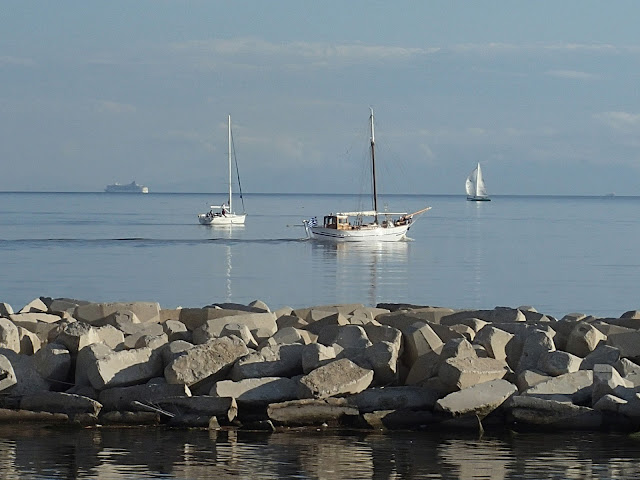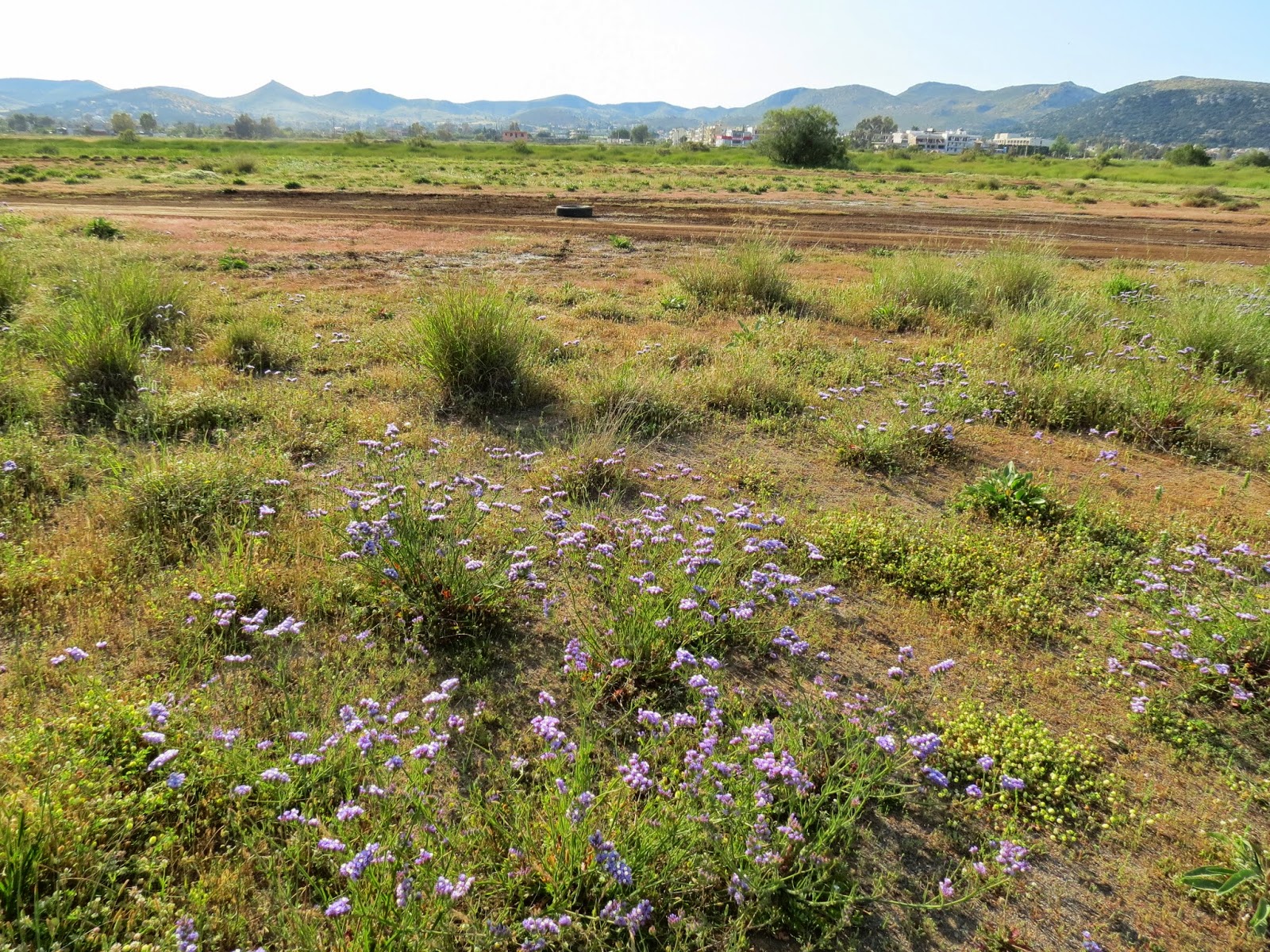
May 28th 2015 - Phaleron Bay Athens
By the first week of May Attika's fields go yellow, drab yellow in the warming sun's glare. And sometimes we get a thunder storm. We had one today.
We organized to meet and discuss our views on our Nature Park Proposal at the Phaliriko Delta on Athens's coastal strip at the river mouth of the Ilissos.
The beauty and biodiversity of this 'vacant lot' ecosystem is something that enthuses me. This year we have Little-ringed plover nesting, perhaps the only pair in the Attika Basin.160 birds visit the site. Now in late spring the migration is already over but an assortment of birds were here to greet us: Barn Swallows, House Martins, Olivaceous Warblers, Zitting Cisticola, Sardinian Warblers, Black Swifts, Yellow-Legged Gulls.
The area has remarkable potential for restoration, especially as the much-needed flood control infrastructure may tie in with wetland creation here. Already the site is a quazi-wetland.
Pools form after the rains. These pools simulate an ephemeral pond environment. Native tamarisks punctuate the herb-rich meadows. Already one of our colleagues has compiled huge plant-list for the site; some scarce and one-or-two rare plant species. About 20 butterfly species have been tallied as have several other unexpected critters, Leopard Snake, Balkan Green Lizard included. The sea-life here is exceptional: a semi-natural urban delta system, almost estuarine (but with minimal tidal fluxes); eutrophic. Loggerhead turtles spend weeks here in spring and early summer and are rather easy to see. In these respects, as it is, the site does have much interest as a marine, wetland and infilled coastal ecosystem...right at the edge of Greece's capital city and port.
However, as are many vacant lot ecosystems, this place is threatened by typically concrete-based ideas for development....so we are working against this.
For more information in Greek, feel free to peruse over our proposal:
Here are my snapshots from these evenings meeting, immediately after the rain.


































